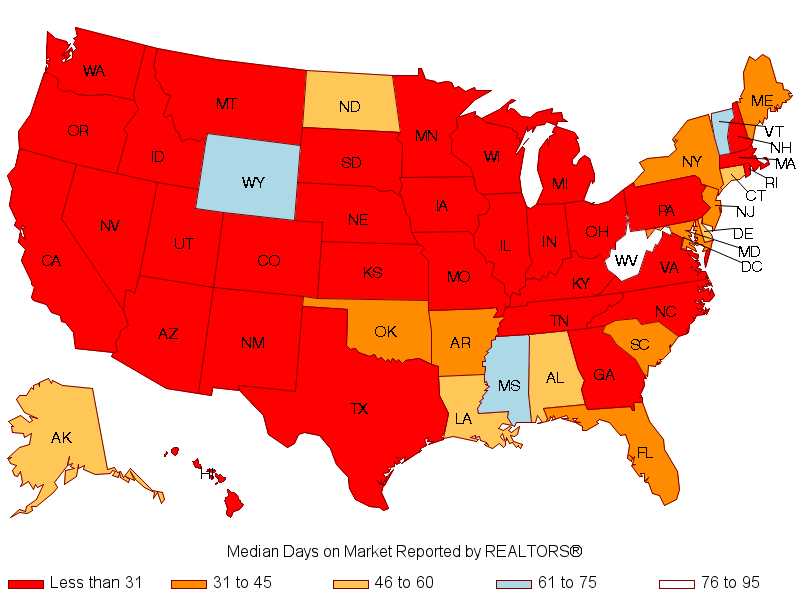Amid strong demand compared to homes for sale, REALTORS® reported that properties were typically on the market for 27 days, a shorter time compared to one year ago (30 days) and about the same level during the prior month (26 days), according to the July 2018 REALTORS® Confidence Index Survey.[1]
During the May–July 2018, properties typically sold within one month in 32 states and in the District of Columbia, with properties selling most quickly in the D.C. metro area (17 days), Utah (19 days), Colorado, Idaho, Michigan, Ohio, South Dakota, and Washington (20 days).

Another indicator of how quickly properties are selling is the days on market on Realtor.com.[2]
In 381 out of 500 metro areas tracked by Realtor.com (76 percent) typically stayed on the market for fewer days in July 2018 compared to their median listing time one year ago, including in high price areas such as Jose-Sunnyvale-Sta. Clara, CA; San Francisco-Oakland-Hayward, CA; Los Angeles-Long Beach Anaheim, CA; San Diego-Carlsbad, CA; Bridgeport-Stamford-Norwalk, CT ; and New York-Newark, Jersey City, NY-NJ-PA. The decline in days on market in many areas indicates that demand is still broadly strong, with demand outpacing homes for sale.
However, there were fewer metro areas that had year-over-year faster selling times compared to July 2017 (395 metros). Metros where properties typically stayed much longer on the market longer in July 2018 compared to one year ago include Vallejo-Fairfield, CA; Madera, CA; Kennewick-Richland, WA; and Bend-Redmond, OR.
Scroll down the list of metro areas in the interactive table below or hover over the map to view the median number days properties were listed on Realtor.com in July 2018 and one year ago.
[1] In generating the median days on market at the state level, NAR uses data for the last three surveys to have close to 30 observations. Small states such as AK, ND, SD, MT, VT, WY, WV, DE, and D.C., may have fewer than 30 observations.
[2] To access Realtor.com data, go to https://www.realtor.com/research/data/.








